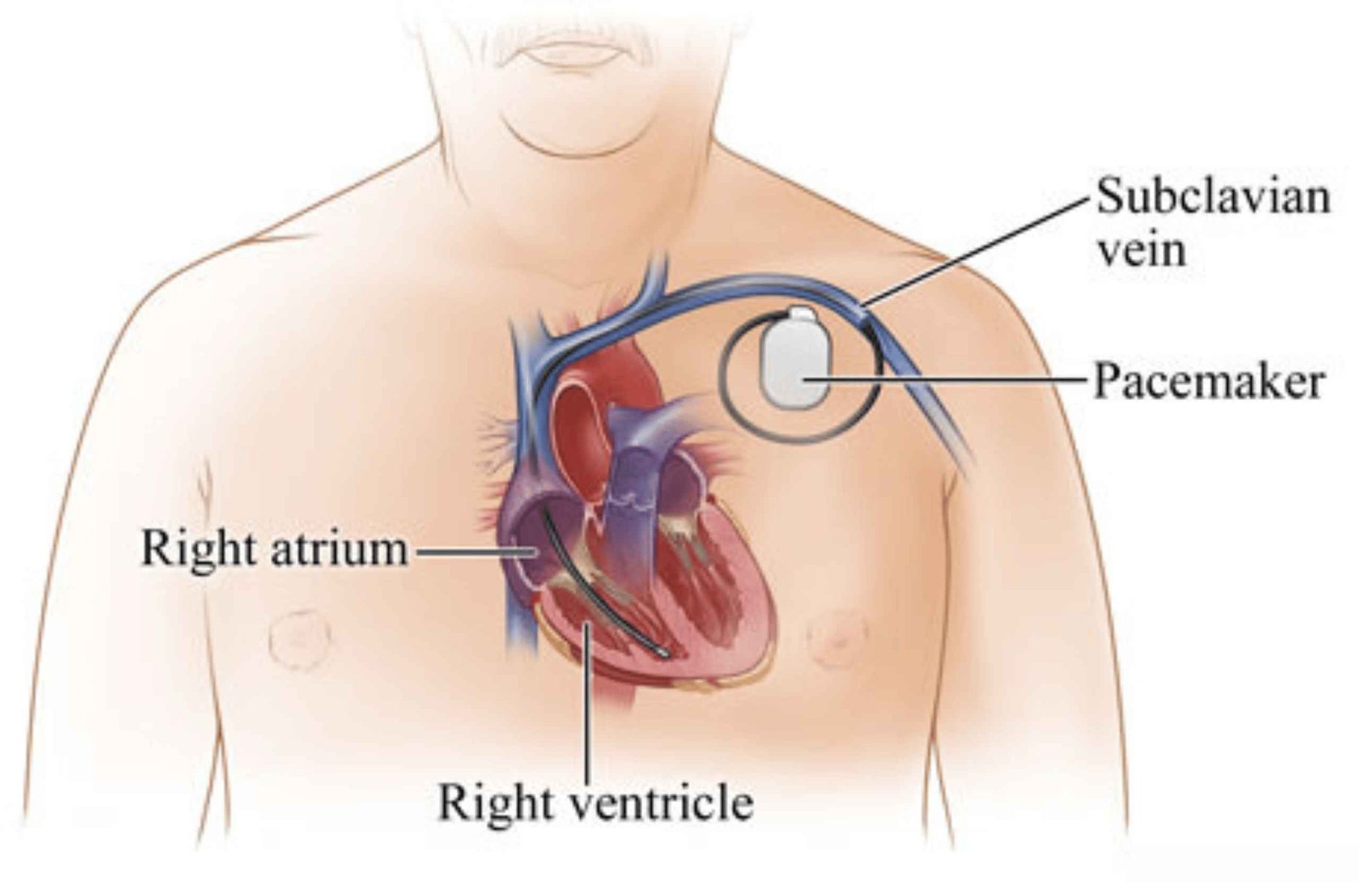
Permanent pacemaker implantation is a surgical procedure designed to manage and regulate abnormal heart rhythms by delivering electrical impulses to the heart. This procedure is often recommended for patients with bradycardia (slow heart rate) or other heart rhythm disorders that cannot be effectively managed with medications alone. It helps improve heart function, alleviate symptoms, and enhance overall quality of life.
A permanent pacemaker is a small, battery-operated device that is implanted under the skin near the collarbone. It consists of a pulse generator and leads (thin insulated wires) that are threaded through a vein into the heart chambers. The pulse generator delivers electrical impulses to regulate the heart rate and ensure the heart beats at a normal rate.
Permanent pacemakers are recommended for conditions such as:
The implantation procedure typically involves the following steps:
After the procedure, patients typically stay in the hospital for observation overnight. Recovery involves:
Living with a permanent pacemaker involves:
Permanent pacemaker implantation is a safe and effective treatment option for managing heart rhythm disorders and improving quality of life. Under the guidance of skilled cardiologists like Dr. Amit, this procedure provides long-term support and monitoring to ensure the heart functions optimally. If you or a loved one are considering a permanent pacemaker, consult with a healthcare provider to discuss the benefits, risks, and expectations based on your specific medical condition.
A permanent pacemaker is a small electronic device implanted under the skin, usually near the collarbone, to regulate and maintain a regular heartbeat by sending electrical impulses to the heart when needed.
You may need a permanent pacemaker if your heart beats too slowly (bradycardia), if there are interruptions in the electrical signals controlling your heartbeat (heart block), or if you have certain types of arrhythmias that require pacing support.
The implantation procedure involves making a small incision near the collarbone to create a pocket under the skin where the pacemaker generator is placed. One or more leads (thin wires) are then guided through a vein into the heart chambers under fluoroscopic (X-ray) guidance. These leads are connected to the pacemaker generator, which is programmed to deliver electrical impulses as needed to regulate the heart rate.
While permanent pacemaker implantation does involve a minor surgical procedure, it is considered relatively safe and routine. It is typically performed under local anesthesia, and most patients can go home the same day or after a short hospital stay.
No, you will not feel the pacemaker working inside you. The electrical impulses are very low voltage and not noticeable. The pacemaker works silently to ensure your heart beats at the correct rate.
While complications are rare, risks include infection at the surgical site, bleeding or bruising, damage to blood vessels or nerves near the implant site, and very rarely, issues with the leads or pacemaker function that may require reoperation.
Modern pacemakers are designed to last 10-15 years or longer, depending on factors such as battery life and the patient’s heart condition. Your healthcare provider will monitor the pacemaker’s function over time and schedule regular check-ups to ensure optimal performance.
In most cases, you can resume normal activities after recovering from the implantation procedure. However, your healthcare provider may recommend avoiding activities that could damage the device, such as high-impact sports or lifting heavy weights. It’s important to follow your doctor’s advice and attend regular follow-up appointments.
Yes, many modern pacemakers are MRI-compatible, but it’s essential to discuss this with your healthcare provider and the imaging center to ensure safety and proper management of your pacemaker during the MRI procedure.
Yes, eventually. The pacemaker battery will need to be replaced when it runs low, typically every 5-15 years depending on the device’s settings and usage. This is a minor surgical procedure that involves replacing the generator while leaving the leads in place.